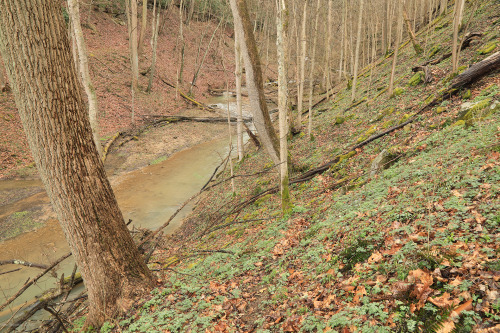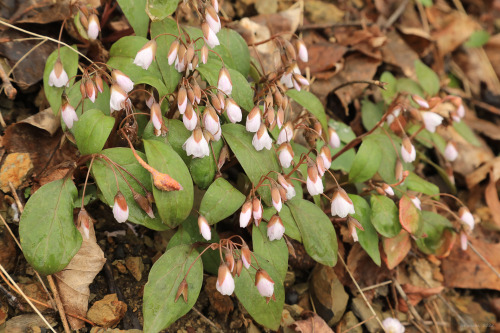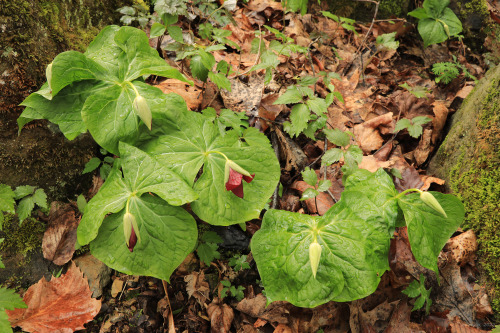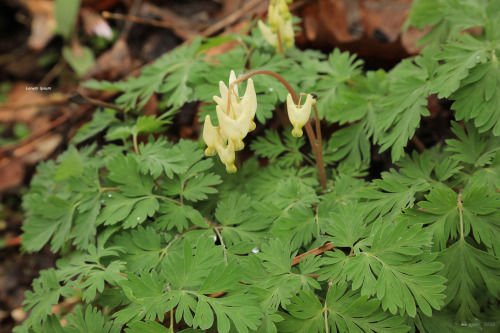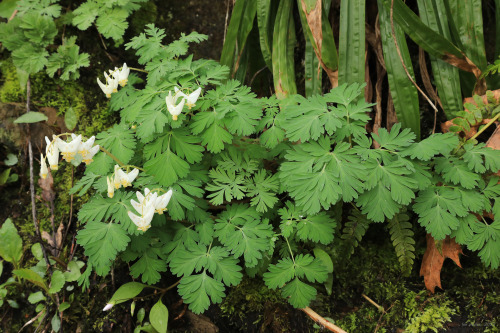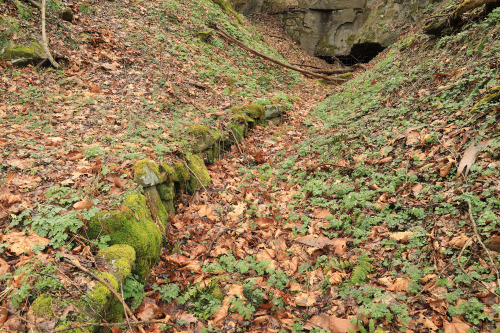A week and a half into April and despite a cold snap, the first wave of spring ephemerals is making
A week and a half into April and despite a cold snap, the first wave of spring ephemerals is making a hard push along the Mon River Trail. Even when striking demure poses under a cold spring rain, these short-lived beauties put on a memorable show. Among the early arrivals are: Carolina spring beauty (Claytonia caroliniana), which has broader leaves than its close relative, Virginia spring beauty (Claytonia virginica); purple trillium (Trillium erectum), also known as wake robin, a gorgeous stinker pollinated by carrion flies and beetles; Dutchman’s breeches (Dicentra cucullaria), also known as little blue staggers, whose narcotic properties are known to cause grazers to stagger drunkenly after nibbling on them; great white trillium (Trillium grandiflorum), which when left undisturbed forms enormous drifts on Appalachia’s rich, well-drained slopes; and bluntleaf waterleaf (Hydrophyllum canadense), also known as mapleleaf waterleaf, a stunningly-patterned and increasingly rare perennial of moist, rich soils.Field Notes:1. I have a real fondness for the waterleafs, whose ornately-patterned foliage and tolerance for moist soils make them well-suited for poorly-drained spots in native wildflower gardens. Bluntleaf waterleaf is my favorite, however. The plant’s distinctive watermark, a distinguishing feature that gives the waterleafs their common name, is particularly striking in early spring - a vivid and evocative Rorschach test courtesy of nature. -- source link
Tumblr Blog : vandaliatraveler.tumblr.com
#appalachia#vandalia#spring#west virginia#wildflowers#claytonia caroliniana#trillium erectum#purple trillium#red trillium#wake robin#dicentra cucullaria#dutchmans breeches#trillium grandiflorum#hydrophyllum canadense#bluntleaf waterleaf#mapleleaf waterleaf
